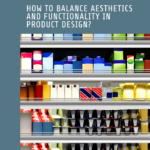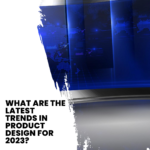How to design for manufacturability in product design?
Design for manufacturability (DFM) is the process of designing products that are easy and efficient to manufacture. It is a critical part of the product design process, as it can help to reduce manufacturing costs, improve product quality, and shorten time to market.
There are a number of things that product designers can do to design for manufacturability. Some of the most important factors to consider include:
- Material selection: The choice of materials can have a big impact on the manufacturability of a product. Some materials are more difficult to machine than others, and some materials require specialized manufacturing processes. When selecting materials, it is important to consider the manufacturing process that will be used to produce the product.
- Part design: The design of the individual parts that make up a product can also have a big impact on its manufacturability. For example, parts with complex shapes or tight tolerances can be difficult and expensive to manufacture. When designing parts, it is important to keep manufacturability in mind.
- Assembly design: The design of how the individual parts of a product are assembled can also have a big impact on its manufacturability. For example, products that require a lot of manual assembly can be expensive and time-consuming to produce. When designing products, it is important to design for easy assembly.
Benefits of designing for manufacturability
There are a number of benefits to designing for manufacturability. Some of the most important benefits include:
- Reduced costs: Designing for manufacturability can help to reduce manufacturing costs by reducing the time and effort required to produce a product.
- Improved quality: Designing for manufacturability can help to improve product quality by reducing the risk of defects.
- Shorter time to market: Designing for manufacturability can help to shorten time to market by making it possible to produce products more quickly and efficiently.
How to implement design for manufacturability
There are a number of things that product designers can do to implement design for manufacturability. Some of the most important things to do include:
- Understand the manufacturing process: Before starting to design a product, it is important to understand the manufacturing process that will be used to produce it. This will help you to identify any potential manufacturability issues early on.
- Work with manufacturing engineers: Manufacturing engineers have a deep understanding of the manufacturing process and can provide valuable feedback on the manufacturability of your design. It is a good idea to work with manufacturing engineers throughout the design process.
- Use design for manufacturability software: There are a number of software applications that can be used to analyze the manufacturability of a design. These software applications can help you to identify potential manufacturability issues and make changes to your design before it is prototyped or manufactured.
Examples of products that have been designed for manufacturability
Here are a few examples of products that have been designed for manufacturability:
- The Apple iPhone: The iPhone is a great example of a product that has been designed for manufacturability. It is made from a small number of parts that are easy to assemble. The iPhone is also designed to be manufactured using automated processes, which helps to reduce costs and improve quality.
- The Toyota Camry: The Toyota Camry is another great example of a product that has been designed for manufacturability. It is made from a small number of parts that are easy to assemble. The Camry is also designed to be manufactured using a just-in-time manufacturing system, which helps to reduce costs and improve efficiency.
- The IKEA BILLY bookcase: The IKEA BILLY bookcase is a great example of a product that has been designed for both manufacturability and assembly. It is made from a small number of flat-pack parts that are easy to assemble with simple tools. The BILLY bookcase is also designed to be modular, so that it can be customized to fit any space.
Conclusion
Design for manufacturability is an important part of the product design process. By designing for manufacturability, product designers can reduce costs, improve quality, and shorten time to market. There are a number of things that product designers can do to design for manufacturability, such as understanding the manufacturing process, working with manufacturing engineers, and using design for manufacturability software.








